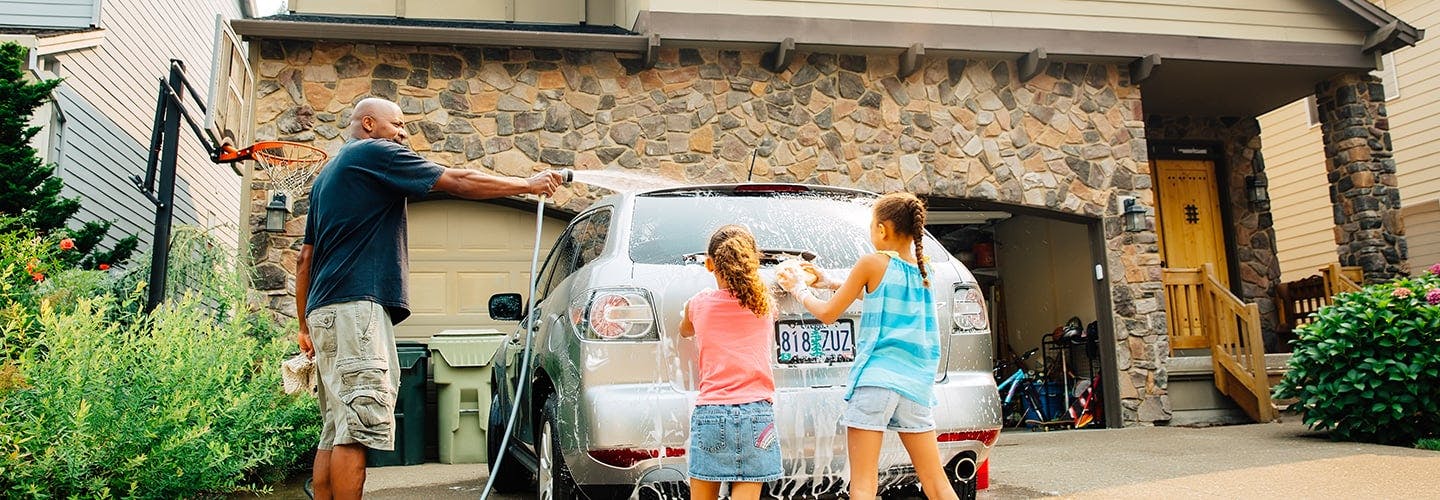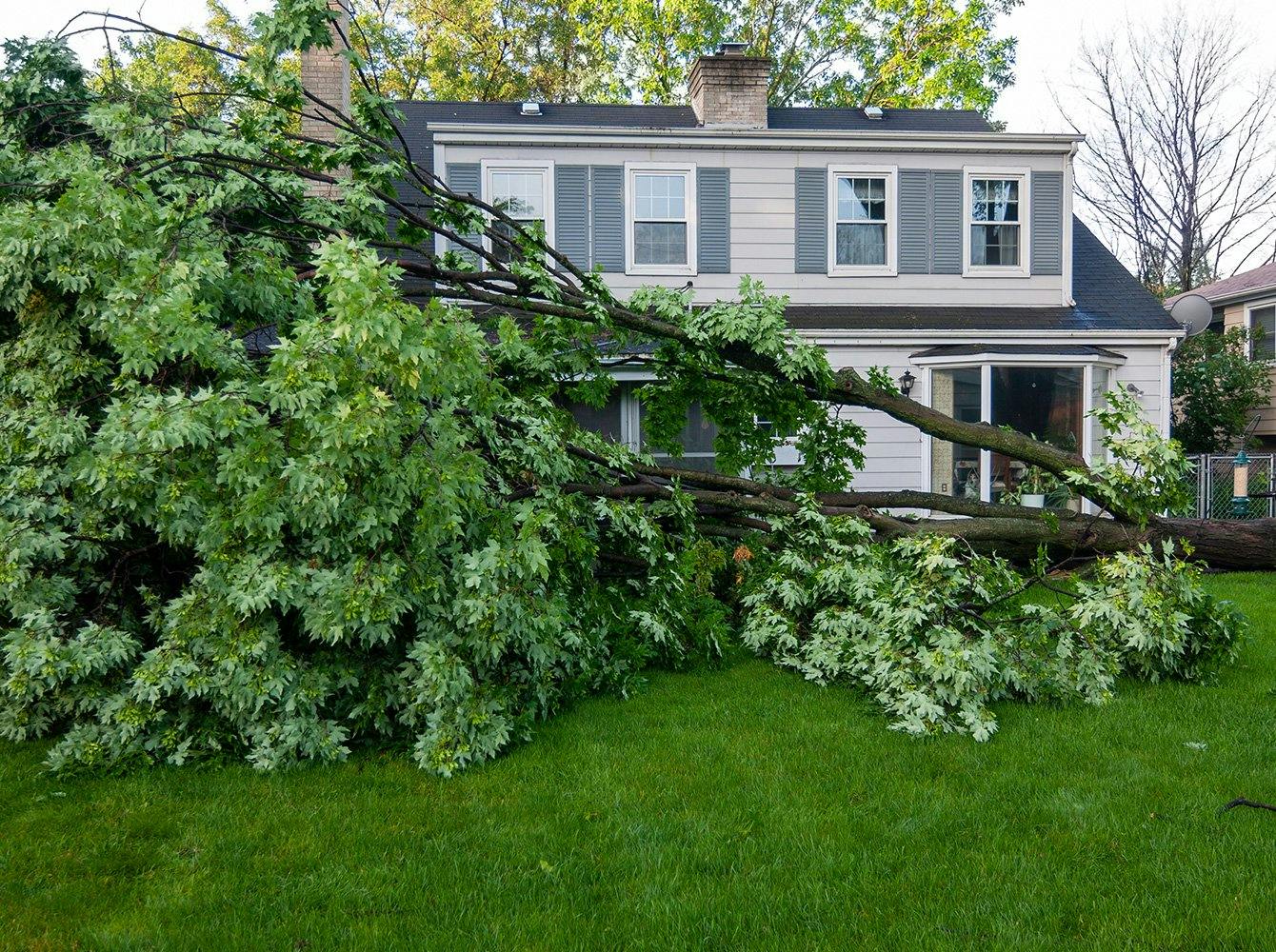Discover your insurance landscape
- Coverage clarity
- Homeowners insurance
- Auto insurance

Do you know what insurance coverages you have, which you need and how they all fit together? It’s important to take some time every so often to revisit all of your policies and verify that they are covering what you want covered and to the degree that you need. In evaluating and updating your needs, you may find opportunities to improve your coverage or your pricing.
Your insurance landscape
Your insurance landscape is all of your policies, for everything that needs coverage, from all carriers that you have a policy with. For example, you might have life insurance through Ethos, pet insurance through Fetch, auto insurance through Progressive and homeowners through Nationwide. Together those make up your insurance landscape. Knowing your entire insurance landscape helps you understand your insurance coverages and how they work together, or don’t, so that you can make informed decisions about your insurance needs and stay adequately protected. Below are some ways that this understanding can benefit you.
Avoid insurance coverage gaps
Insurance gaps occur when there are risks or events that are not covered by your insurance policies. These leave you vulnerable to financial losses. Seeing all of your policies together helps you to know what your existing insurance policies cover and where potential gaps exist. By staying aware of your insurance landscape, you can take steps to address any potential gaps that you have and work to make sure that you have adequate protection in place. There are many possible gaps, often the coverage amount is too low and can be remedied by increasing it. There are other gaps that require purchasing a new policy or coverage, though. Some common examples of those gaps are:
- Flood insurance – Standard home insurance policies typically do not cover damage caused by floods, which can be a significant risk in areas prone to flooding. If you are concerned about flooding, you need to purchase separate flood insurance to ensure that you have adequate coverage.
- Insufficient liability coverage – If you are found to be at fault for an accident that causes extensive property damage or injuries, your liability coverage may not be enough to cover all the costs. This is an example where you could benefit from an umbrella policy.
Insurance experts who have your back
Save money
Being aware of your insurance landscape can save you money. You’ve seen how insurance gaps can leave you vulnerable and create significant costs when it is time to make a claim and you discover you’re not covered. You also know that it might be wise to purchase additional coverage when you buy your policy to prevent these gaps from getting the best of you. The flip side of that coin is being over-insured. This can happen when you have coverage that exceeds the value of the assets being insured. For example, if you have a car worth $5,000 and you have collision and comprehensive insurance with a $1,000 deductible, it may not be necessary to pay for a high level of coverage.
In both cases, being under- or over-insured, knowing your insurance landscape can help you find coverage that meets your needs and doesn’t leave you vulnerable financially either when paying premiums or when filing claims.
Seeing which policies you have with which insurance companies can also help you save money by identifying opportunities to qualify for a discount by bundling insurance policies. Bundling will be addressed later, but it would be remiss to not mention it when talking about ways you can save money while learning about how your policies work together.
Reduce stress
When you have a clear understanding of your insurance coverages and know that you’ve filled in any gaps, you are better equipped to navigate the claims process with confidence. You'll know what losses are covered under your policy and what the claim process entails, which can help you make informed decisions and communicate effectively with your insurance company. Both of those are keys to getting your repairs completed or your bills repaid quickly.
Let's say there is a storm in your area and a tree falls on your car and house. If you know exactly what your policies cover, you'll be able to provide the necessary information and documentation to your carriers and know what to expect from them and what you’ll be responsible for. As this event will incorporate more than one type of insurance, you’ll have to contact both companies and even may need to include your umbrella policy if your damages are greater than your policy limits.
Plan for the future
Changes to your life may mean changes to your insurance. For example, you might be planning to start a family. This is often the first time that people consider buying life insurance, and it’s an important time to have it. It can provide financial protection so that your family is not left financially vulnerable if something were to happen to you. You might also need to buy a bigger car to accommodate your growing family. Knowing your current auto coverages will help you to determine what you’ll need to change when you go from sports car to minivan.
The more you know about your insurance coverages, the better you’re able to make decisions about your future and what coverages need to change when your life does.
Evaluate your insurance needs
Liability coverage is an essential component of any insurance policy, as it provides protection against lawsuits and other legal claims that may arise if you are found at fault for an accident or other event. Liability coverage typically includes two types of protection, included in your homeowners or auto insurance policies:
- Bodily injury liability coverage – This pays for medical expenses, lost wages, and other damages if someone is injured or killed in an accident for which you are found at fault.
- Property damage liability coverage – This pays for repairs or replacement costs if you damage someone else's property in an event determined to be your fault.
For some people, liability coverage may need to be increased beyond the limits of a standard home or auto insurance policy to ensure adequate protection. Knowing your current coverages, over all of your policies, allows you to see where you might benefit from additional liability coverage. Umbrella insurance is a type of liability insurance that is designed to protect you from large and unexpected claims, such as lawsuits or judgments that exceed the limits of your primary insurance policies. Umbrella policies do not work alone, they need to be bundled with other insurance policies.
How VIU by HUB can help
VIU by HUB was founded with exactly this in mind. From the start, our mission has been to help people find their insurance gaps and resolve them. We’re so committed to this that we encourage our customers to import policies that were purchased elsewhere and will help them identify gaps and notify them of important policy dates. Until now, we’ve offered this to people who purchase at least one policy from VIU by HUB.
Not anymore.
Our new app is available to anyone in the United States, on both Android and iOS , and comes with the same great features that our customers have been enjoying online.
Insurance bundles
Everyone has heard of bundling insurance, but what is it really and is it right for you? Bundling insurance is related to having an awareness of your insurance landscape. As you know, your insurance landscape refers to the overall picture of your insurance coverage, including the types of policies you have, the coverage limits and the premiums you pay. Insurance bundles are a way to simplify this by combining multiple (or, bundling) insurance policies under one provider and one premium.
What is an insurance bundle?
An insurance bundle is when you purchase two or more insurance policies from the same provider. For example, you may purchase auto insurance and homeowners insurance from the same company. By bundling your policies, you may be eligible for discounts and other benefits. In the past, this also allowed you to get a clearer picture of your total insurance landscape. However, with VIU by HUB you’re able to get that clearer picture and easier management without needing to tie yourself to one insurance company.
Why bundle insurance policies?
The amount you can save by bundling your insurance policies will depend on the insurance company and the policies you bundle. The exact amount you save will depend on factors such as your age, location, driving record and credit score.
Beyond just saving money, there are several benefits of bundling your insurance:
- Convenience – You only have to deal with one company, making it easier to manage your policies and know who to call when you need to file a claim.
- Savings – You may see lower rates for each of the policies you have with that insurance company than if you had them each with different carriers.
- Simplified billing – You receive one bill for all your insurance policies, simplifying the payment process.
- Increased coverage – You may get additional coverage that you may not have been able to afford if you purchased separate policies.
- Loyalty discounts – You can qualify for loyalty discounts offered by some insurance companies to customers who bundle their policies and remain with the company for a certain amount of time.
What types of insurance can you bundle?
You can bundle most types of insurance policies. Some of the most popular types of insurance to bundle together are:
- Auto and homeowners insurance – This is one of the most common insurance bundles. Most Americans have these two policy types so it’s an easy pairing to bundle.
- Auto and renters insurance – If you rent your home, you can bundle your auto and renters insurance in the same way that homeowners can bundle their policies.
- Homeowners and umbrella insurance – Umbrella insurance provides additional liability coverage beyond what your homeowners insurance provides.
- Auto and umbrella insurance – Similarly, umbrella is a good policy type to add to existing auto insurance coverage.
- Life and homeowners insurance – A house is a big investment, and a life insurance policy can protect it and keep it in the family after an untimely death.
Once you’ve made yourself aware of your insurance landscape, and have made smart decisions about bundling insurance, or not, it’s easy to sit back and relax. Don’t get too comfortable though. Be sure to review your insurance policies regularly, especially if you’ve made any major changes like an addition to your home or changing your marital status. Talk to your insurance company, or a VIU by HUB Advisor, to evaluate your coverages and needs and make any adjustments, additions or subtractions that will improve your insurance landscape.
A panoramic outlook on
all things insurance
The VIU Point is here to help you make sense of it all, so you can confidently compare homeowners insurance quotes and make the best policy decisions.


